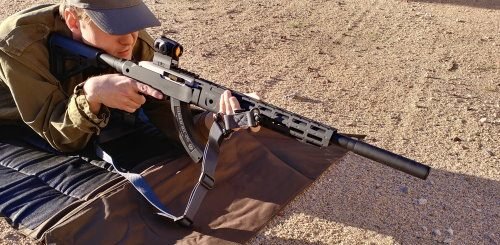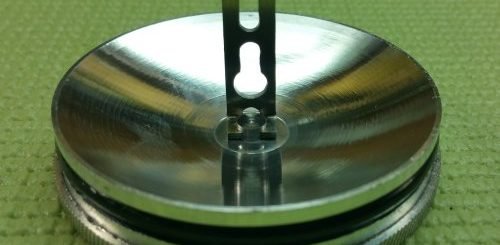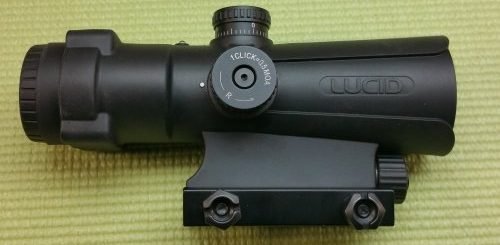Smokey Fire Starter Paracord Bracelet

A pretty common fashion statement these days is a bracelet made out of paracord. There are enough of these hanging off of the wrists of guys that we’ve pretty much moved past the “hey, what’s that on your arm” phase to the “eh, 550 cord…cool” level of recognition. Paracord bracelets are available in an almost endless combinations of colors, braid patterns and clasp types. There are multiple store bought options or you can buy some rope and make one yourself. Even though these are designed to be decorative, they are often sold as a survival accessory that could help save your life in perilous circumstances.
The usefulness of these paracord accessories varies quite a bit. The three main factors to consider when evaluating the usefulness of a paracord bracelet are the type of cord used, the length of the cord and the type of clasp. The most common material used in the better bracelets is 550 lb rated paracord. It is a type of rope used originally to attach people to parachutes, which quickly became popular for its long list of possible uses. It is a kermantle type of rope, which means that it is constructed in the same basic way as climbing rope, with an outer protective nylon sheath that covers seven internal strands. This gives us a cord that is relatively strong for its small diameter and also has a bit of stretch. It is worth noting that not all “paracord bracelets” are made out of paracord, though. It is easy to make a similar style bracelet out of a less expensive type of rope that is not as strong. This is something to keep an eye out for, to make sure that the rope will perform as expected, if you ever need it. An example of this is that with 550 paracord the inner strands can be pulled out of the kermantle sheath and tied together to form a much longer piece of lighter weight cord. But, less expensive rope is often constructed in a way that makes this not possible.

Another thing to check into is how long is the piece of paracord that was braided together to form your bracelet. It is possible to make a paracord bracelet with as little as five feet of rope. This makes for a nice, thin looking bracelet, but the shorter the cord, the more limited you are in how you can use it. A common plan is in using a paracord bracelet to build an emergency shelter. One of the easiest ways to do this is to string a piece of rope between two trees and use it as a ridge line to support a tarp or trash bag shelter. This is not a realistic option with a really short piece of cord. Although something is certainly better than nothing, a fifteen or twenty foot long piece of cord is going to give you far more options than a short piece.
The clasp is one area were you can find a lot of different options. The simplest is just a large knot that goes through a loop in the bracelet, but there are all kinds of different sliders and clips available. People keep coming up with newer, fancier options. One model that has innovated in this area is the Smokey Paracord Bracelet. This model meets the basic requirements of a good bracelet, being made out of a sixteen foot long piece of 550 lb test paracord. But, an interesting upgrade is the toggle clasp made out of a short section of ferro rod. The other half of the clasp is a metal ring that can be used a striker with the ferro rod. This gives you a bracelet with both cordage and an emergency fire starter. Compared to the more common Fastex buckle type clasp, this could be a much more useful tool in an emergency situation.

The question about this type of design is if it will is actually work to start a fire. The ferro rod section used for the clasp is just over an inch and a quarter long, about half the length you find in most stand alone ferro rods. The question then is if it is possible to actually start a fire with a one and a quarter inch piece of ferro rod and a striker. We were a little concerned that it would not be possible to reliably make a spark. But, with a little thought, things worked out surprisingly well.

We were able to get steel wool started with the first good spark that hit it. Fine steel wool will burn for a little while, which gives you enough time to put it into a small pile of pine needles or dry leaves and blow on it to grow the fire.

Dryer lint lit right up as well. This stuff burns fast, so be ready to add more material as soon as you can.

We shaved up a small pile of fatwood curls which lit easily and burned dramatically. Assuming you had even a small knife handy, if you were lost or stranded in the woods, putting the heel of your boot to the remnants of a pine tree stump could get you a few pieces of this resin soaked wood which are an amazing fire starter.
The first trick to using the fire starter clasp on the Smokey Paracord Bracelet is holding such a short piece of rod and still be able to run the striker down it with enough force to make a spark. The best option we found was to leave some of the paracord threaded though the rod on each side. Then, fold these ends up, like the wings of a butterfly and grip the cord so that the rod is between your thumb and forefinger. The first few runs of the striker down the length of the rod probably won’t work. This is due to a coating on the outside of the rod that takes a few tries to scrape off. But, once you wear through it and get down to the shiny metal core of the rod, you should start throwing sparks.
It does take a good strike to get sparks to fly, though. If you are scraping off metal shavings instead of sparks, try pressing the striker down hard, as if you were just trying to push it into the rod, then, without loosing that force against the rod, jerk your striker hand forward, down the length of the ferro rod. As you get successful strikes, watch where the sparks go. Line up that spot with your tender, then you should be in good shape to keep yourself warm on a cold night.



